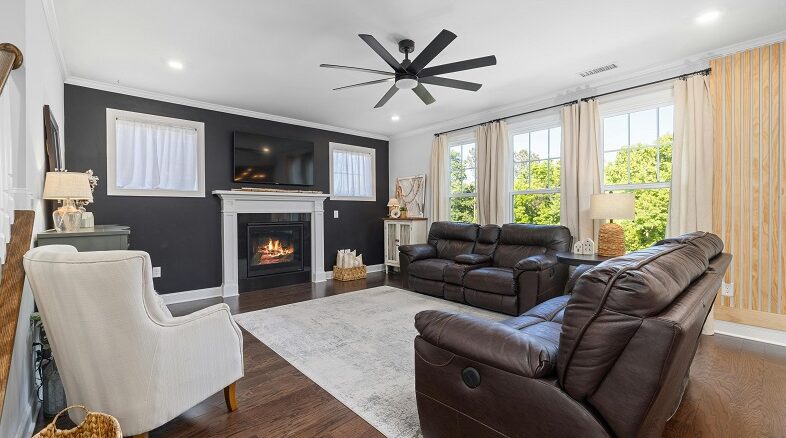
Breathe easier at home with these interior design tips for better air circulation and everyday comfort
July 4, 2025: When we think about interior design, we usually focus on colors, furniture, and home décor items. But there’s something just as important that often gets overlooked: how well air flows through your space. Good circulation can make a huge difference in how your home feels—cooler in summer, cozier in winter, and just fresher all around.
The good news? You don’t need to tear down walls or spend a fortune to improve airflow. With a few thoughtful interior design tips for better air circulation, you can make your home more comfortable, energy-efficient, and healthier for everyone living in it.
Why Air Circulation Should Be Part of Your Design Plan
We all know how stuffy a room can feel without proper airflow. But beyond comfort, circulation plays a big role in your home’s air quality. Poor ventilation can trap humidity, dust, and allergens, and it can even cause mold over time.
On the flip side, improving how air moves through your space can help you get more out of your air conditioning system, keep temperatures more consistent, and even extend the life of your furniture and floors. It’s a win across the board.
5 Interior Design Tips for Better Air Circulation
1. Think About Layout First
Start by looking at how your furniture is arranged. Big, bulky items can block airflow if they’re placed in front of vents, windows, or doorways. Try to keep pathways clear and avoid pressing furniture right up against the walls.
If you’re working with an open layout, great! Air tends to flow more freely through open spaces. But even in smaller rooms, a little rearranging can make a big difference.
2. Make the Most of Your Windows
Let your windows do some of the work for you. Cross-ventilation—when air can enter from one side of the room and exit through another—is one of the easiest and most effective ways to improve airflow. Open windows on opposite sides of a room whenever possible, especially during cooler parts of the day.
Curtains also matter. Go for light, breathable fabrics like linen or cotton to let air pass through more easily. Heavy drapes can trap heat and block breezes.
3. Let Air Move Around Your Furniture
Furniture with legs—think raised sofas or chairs—allows air to flow underneath and keeps rooms feeling lighter and more open. Avoid oversized pieces that crowd a space or sit directly on the floor, especially in small rooms.
Also, keep rugs minimal or opt for lightweight ones, especially near vents or air returns.
4. Add a Few Air-Purifying Plants
While they don’t move air themselves, certain houseplants can help clean and freshen your indoor air. Snake plants, peace lilies, and pothos are all great low-maintenance options. Just don’t overdo it—too many plants in one space can make a room feel humid.
5. Use Fans to Support Natural Flow
Ceiling fans, oscillating floor fans, and even window fans can help move air through your home. In summer, set ceiling fans to spin counterclockwise to push cool air down. In winter, reverse the direction to pull warm air up and circulate it.
Even placing a small fan near a stuffy corner or hallway can break up stagnant air pockets.
Pair Your Design with Smart Air Conditioning
Of course, natural airflow is just one part of the equation. If you use air conditioning, you’ll want your interior design to support it—not work against it.
Here’s how:
Don’t block vents. It’s easy to forget about floor or wall vents when decorating, but keeping them clear helps your AC system work more efficiently.
Use ceiling fans alongside your AC. Fans help spread the cool air more evenly, meaning you may be able to set your thermostat a little higher and still feel comfortable.
Close doors strategically. For rooms that don’t get much use, closing doors can help direct cool air to the areas that need it most. Just be careful not to throw off your system’s balance if you have central air.
Seal and insulate well. No matter how smart your layout is, cooled air will escape if your home isn’t well-insulated. Check around windows, doors, and ductwork for leaks.
Final Thoughts: Design with Comfort in Mind
Improving your home’s air circulation doesn’t have to be complicated. With a few small changes—moving furniture, opening windows strategically, adding fans, and thinking about how your AC works—you can create a home that feels fresher, cooler, and more inviting.
So next time you’re thinking about changing up your space, don’t just think style—think flow. These interior design tips for better air circulation can help your home breathe easier, and make you feel more comfortable in the process.

